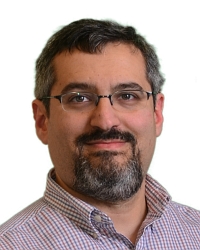TR2019-162
Distributed Cyclic Delay Diversity Systems with Spatially Distributed Interferers
-
- , "Distributed Cyclic Delay Diversity Systems with Spatially Distributed Interferers", IEEE Transactions on Wireless Communications, Vol. 18, No. 4, pp. 2066-2079, June 2019.BibTeX TR2019-162 PDF
- @article{Kim2019jun,
- author = {Kim, Kyeong Jin and Di Renzo, Marco and Liu, Hongwu and Tsiftsis, Theodoros, A. and Orlik, Philip V. and Poor, H. Vincent},
- title = {{Distributed Cyclic Delay Diversity Systems with Spatially Distributed Interferers}},
- journal = {IEEE Transactions on Wireless Communications},
- year = 2019,
- volume = 18,
- number = 4,
- pages = {2066--2079},
- month = jun,
- url = {https://www.merl.com/publications/TR2019-162}
- }
- , "Distributed Cyclic Delay Diversity Systems with Spatially Distributed Interferers", IEEE Transactions on Wireless Communications, Vol. 18, No. 4, pp. 2066-2079, June 2019.
-
MERL Contact:
-
Research Areas:
Abstract:
In this paper, a cooperative single carrier system comprising multiple cooperating remote radio heads (RRHs) and spatially distributed interferers is investigated. Due to the random location of the interferers within the communication range, a mixture of line-of-sight (LoS) and non-line-of-sight (nLoS) paths is considered in the channel model. Under a frequency selective fading channel with a mixture of the LoS and nLoS paths, the distributed cyclic delay diversity (dCDD) is employed to achieve the maximum transmit diversity gain without the exact knowledge of the channel state information at the transmitter side. It is shown that the operating signalto-noise (SNR) regions are divided in two regions, i.e., noiselimited and interference-limited. In this paper, the main focus is on the interference-limited region, in which diversity gain is not achieved due to performance limits determined by system and channel parameters. The existence of these limits on performance metrics, such as the outage probability and ergodic capacity is derived analytically, and then verified by link-level simulations.
